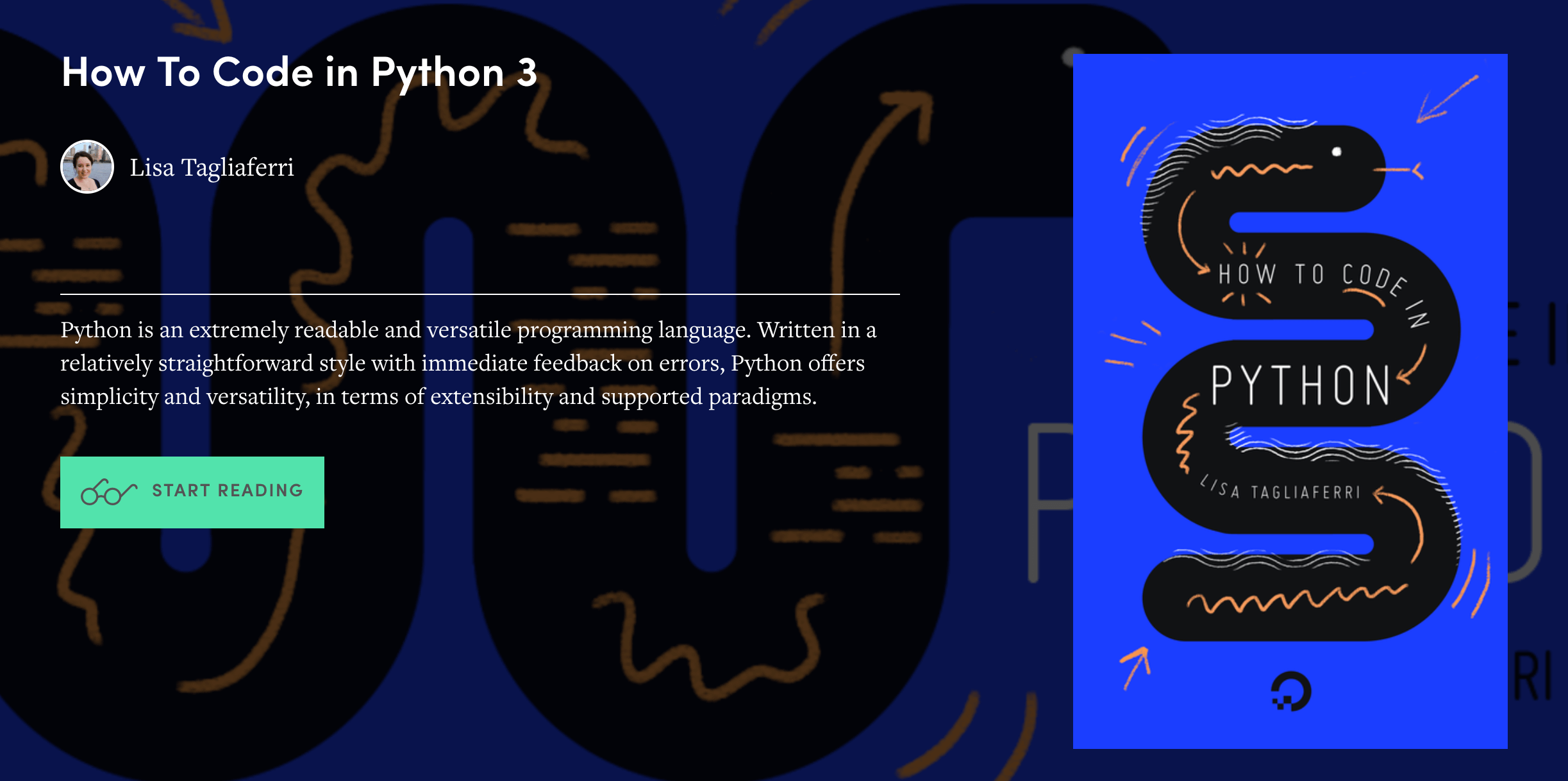
How To Code in Python: Using Manifold to Deliver an Open Educational Resource
Recently, my eBook on Python programming, How To Code in Python 3, was made available as a Manifold publication. I would like to offer my perspective to the Manifold community to give some background on the work and how I believe the Manifold platform provides additional layers of value to the text through providing a place for learning and idea exchange in both university communities and broader publics.
As someone with an interdisciplinary academic background developed within public universities, making resources highly available and fostering communities have been strong focal points in my work. When I shifted trajectories to work in the technology industry while completing my PhD, it was important for me to continue to do work that contributed to the public good. What appealed to me about the cloud infrastructure provider DigitalOcean was that it was deeply committed to open source software development and knowledge sharing. I joined the Community team to help write and maintain their large archive of agnostic Creative Commons-licensed and open access technical tutorials that anyone could use to learn about programming and cloud infrastructure.
When I joined the team, I worked exclusively on developing tutorials on the Python programming language. My efforts were largely based on my pedagogy training that focused on student-centered learning, my research with the CUNY Graduate Center’s Futures Initiative, and my own time as a university teacher. I designed a curriculum through learning Python’s logic and code syntax and worked with software developers and product designers in order to present the tutorial pathway in a way that could empower readers. Alongside this work, I produced project-based tutorials to guide readers through creating full working programs, and also worked with external community authors, including former academic colleagues and students like Michelle Morales and Jeremy Morris, to build out this resource.

Although I designed these tutorials as something that could be read linearly if the reader chose to do so, I wanted to create pathways through the text that could encourage student-driven learning while also providing reference material for more experienced developers. When my team decided to package this material into a How To Code in Python eBook during an organization-wide hackathon, I thought that a book format may actually be somewhat counter-intuitive to my original intentions as it created a more sequential structure that was not as interactive as the tutorial series. This is why, when Matt Gold reached out to me regarding a publication of the book on CUNY’s instance of Manifold, I was excited about the possibilities.
One of my earliest experiences with interactive online texts was Matt Gold’s own digital editions of Debates in the Digital Humanities. The opportunities afforded through making a fully online and open access version of the text and fostering the exchange of ideas speaks to the positive social impact that is possible through leveraging technology in community-driven ways. This is an especially significant gesture in the field of Digital Humanities, as inviting more people to the discussion can ensure that more communities are given access to not only engaging in the discourse, but to contribute to it as stakeholders.
Manifold, an open source software project itself, is a platform that can contribute to several communities. As a publishing platform for academic material, it can bridge together scholars across disciplines as they create marginalia that opens broader discussions. It can also be used in the classroom and can be limited in scope so that a book used in a class can be made available only to enrolled students so that they can concentrate and learn together. Finally, platforms like Manifold can work to disrupt silos that prevent communication and understanding between academia and the larger public, by making scholarship more widely available and allowing more to enter the discourse.
— Lisa Tagliaferri (@lisaironcutter)